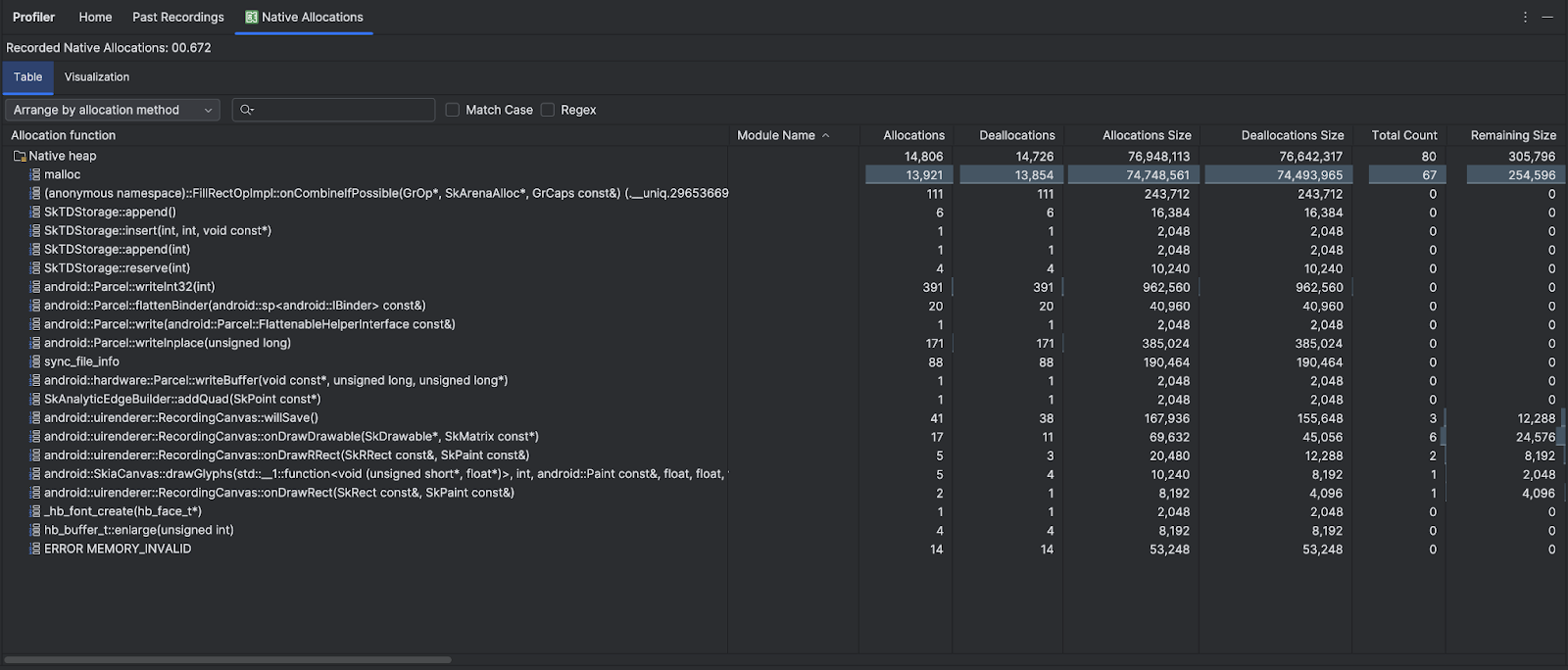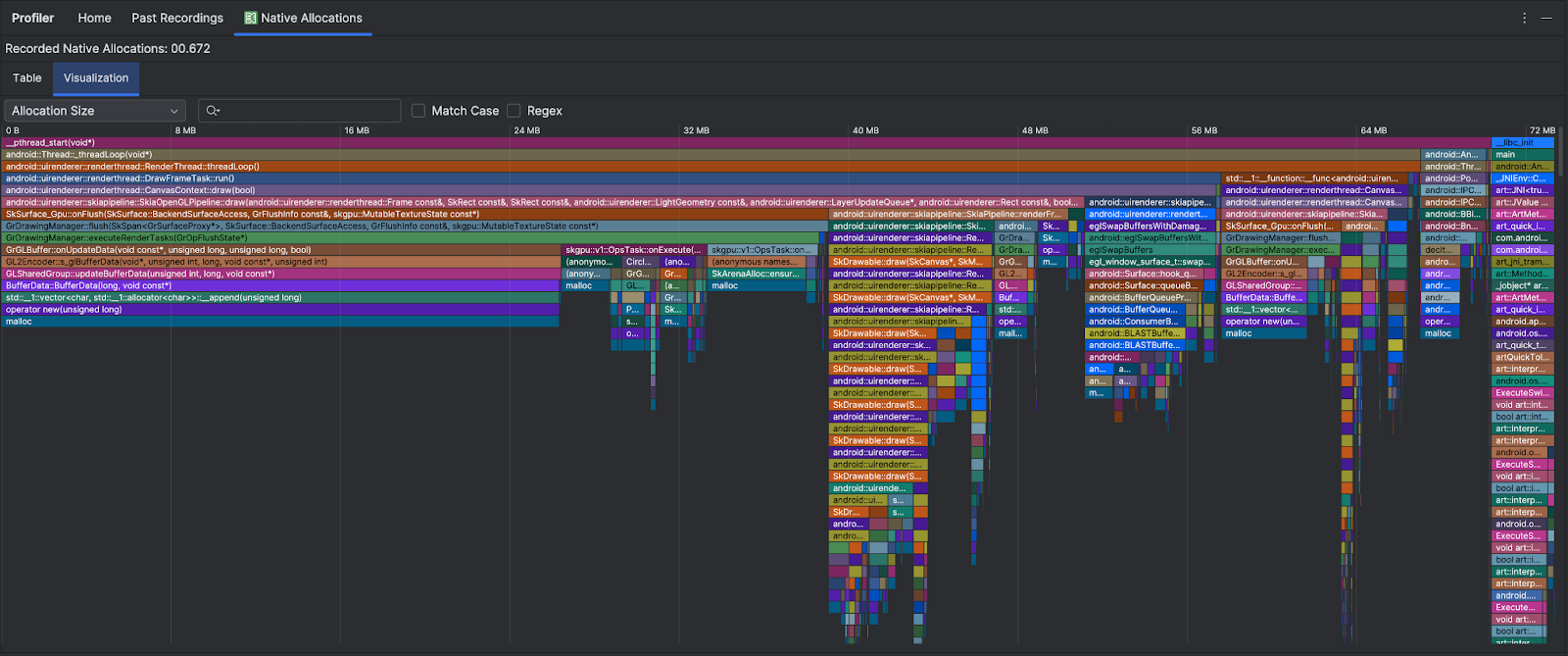আপনি যদি নেটিভ কোড লিখছেন এবং এর মেমরি ব্যবহার সম্পর্কে উদ্বিগ্ন হন, তাহলে অপ্টিমাইজ করার সুযোগ আছে কিনা তা আবিষ্কার করতে আপনার অ্যাপের নেটিভ অ্যালোকেশন প্রোফাইল করা সহায়ক।
কেন আপনি আপনার অ্যাপ মেমরি প্রোফাইল করা উচিত
অ্যান্ড্রয়েড একটি পরিচালিত মেমরি পরিবেশ প্রদান করে — যখন অ্যান্ড্রয়েড নির্ধারণ করে যে আপনার অ্যাপ আর কিছু বস্তু ব্যবহার করছে না, তখন আবর্জনা সংগ্রহকারী অব্যবহৃত মেমরিকে আবার গাদা করে ছেড়ে দেয়। অ্যান্ড্রয়েড কীভাবে অব্যবহৃত মেমরি খোঁজার বিষয়ে যায় তা ক্রমাগত উন্নত করা হচ্ছে, কিন্তু সমস্ত অ্যান্ড্রয়েড সংস্করণে কিছু সময়ে, সিস্টেমটিকে আপনার কোডকে সংক্ষিপ্তভাবে বিরতি দিতে হবে। বেশিরভাগ সময়, বিরতিগুলি দুর্বোধ্য হয়। যাইহোক, যদি আপনার অ্যাপটি সিস্টেমটি সংগ্রহ করতে পারে তার চেয়ে দ্রুত মেমরি বরাদ্দ করে, তবে সংগ্রাহক আপনার বরাদ্দ সন্তুষ্ট করার জন্য যথেষ্ট মেমরি মুক্ত করার সময় আপনার অ্যাপটি বিলম্বিত হতে পারে। বিলম্বের কারণে আপনার অ্যাপ ফ্রেমগুলি এড়িয়ে যেতে পারে এবং দৃশ্যমান ধীরগতির কারণ হতে পারে৷
আপনার অ্যাপের মেমরি ব্যবহার কমাতে পারে এমন প্রোগ্রামিং অনুশীলন সম্পর্কে তথ্যের জন্য, আপনার অ্যাপের মেমরি পরিচালনা করুন পড়ুন।
স্থানীয় বরাদ্দ ওভারভিউ
আপনি যখন ট্র্যাক মেমরি কনজাম্পশন (নেটিভ অ্যালোকেশন) টাস্ক চালান, তখন অ্যান্ড্রয়েড স্টুডিও প্রোফাইলার আপনার নির্দিষ্ট করা সময়ের জন্য নেটিভ কোডে বস্তুর বরাদ্দ এবং ডিললোকেশন ট্র্যাক করে এবং নিম্নলিখিত তথ্য প্রদান করে:
- বরাদ্দকরণ : নির্বাচিত সময়ের মধ্যে
malloc()বাnewঅপারেটর ব্যবহার করে বরাদ্দকৃত বস্তুর গণনা। - ডিঅ্যালোকেশন : নির্বাচিত সময়ের মধ্যে
free()বাdeleteঅপারেটর ব্যবহার করে ডিললোকেড করা বস্তুর একটি গণনা। - বরাদ্দের আকার : নির্বাচিত সময়ের মধ্যে সমস্ত বরাদ্দের বাইটে একত্রিত আকার।
- ডিঅ্যালোকেশন সাইজ : নির্বাচিত সময়ের মধ্যে সমস্ত মুক্ত মেমরির বাইটে একত্রিত আকার।
- মোট গণনা : বরাদ্দ কলামের মান বিয়োগ ডিঅ্যালোকেশন কলামের মান।
- অবশিষ্ট আকার : বরাদ্দের আকার কলামের মান ডিঅ্যালোকেশন সাইজ কলামের মান বিয়োগ করে।

ভিজ্যুয়ালাইজেশন ট্যাবটি নির্বাচিত সময় সীমার মধ্যে কল স্ট্যাকের নেটিভ কোড সম্পর্কিত সমস্ত বস্তুর একটি সমষ্টিগত দৃশ্য দেখায়। এটি মূলত আপনাকে দেখায় যে দেখানো উদাহরণগুলির সাথে কলস্ট্যাকের মোট কত মেমরি লাগে। প্রথম সারিটি থ্রেডের নাম দেখায়। ডিফল্টরূপে, বরাদ্দের আকারের উপর ভিত্তি করে বস্তুগুলিকে বাম থেকে ডানে স্ট্যাক করা হয়; অর্ডার পরিবর্তন করতে ড্রপ-ডাউন ব্যবহার করুন।

ডিফল্টরূপে, প্রোফাইলার 2048 বাইটের একটি নমুনা আকার ব্যবহার করে: প্রতিবার 2048 বাইট মেমরি বরাদ্দ করা হয়, মেমরির একটি স্ন্যাপশট নেওয়া হয়। একটি ছোট নমুনা আকারের ফলে আরও ঘন ঘন স্ন্যাপশট পাওয়া যায়, যা মেমরি ব্যবহার সম্পর্কে আরও সঠিক তথ্য প্রদান করে। একটি বড় নমুনা আকার কম সঠিক তথ্য প্রদান করে, কিন্তু এটি কম সিস্টেম সংস্থান গ্রহণ করে এবং রেকর্ড করার সময় কর্মক্ষমতা উন্নত করে। নমুনার আকার পরিবর্তন করতে, রেকর্ডিং কনফিগারেশন সম্পাদনা করুন দেখুন।

